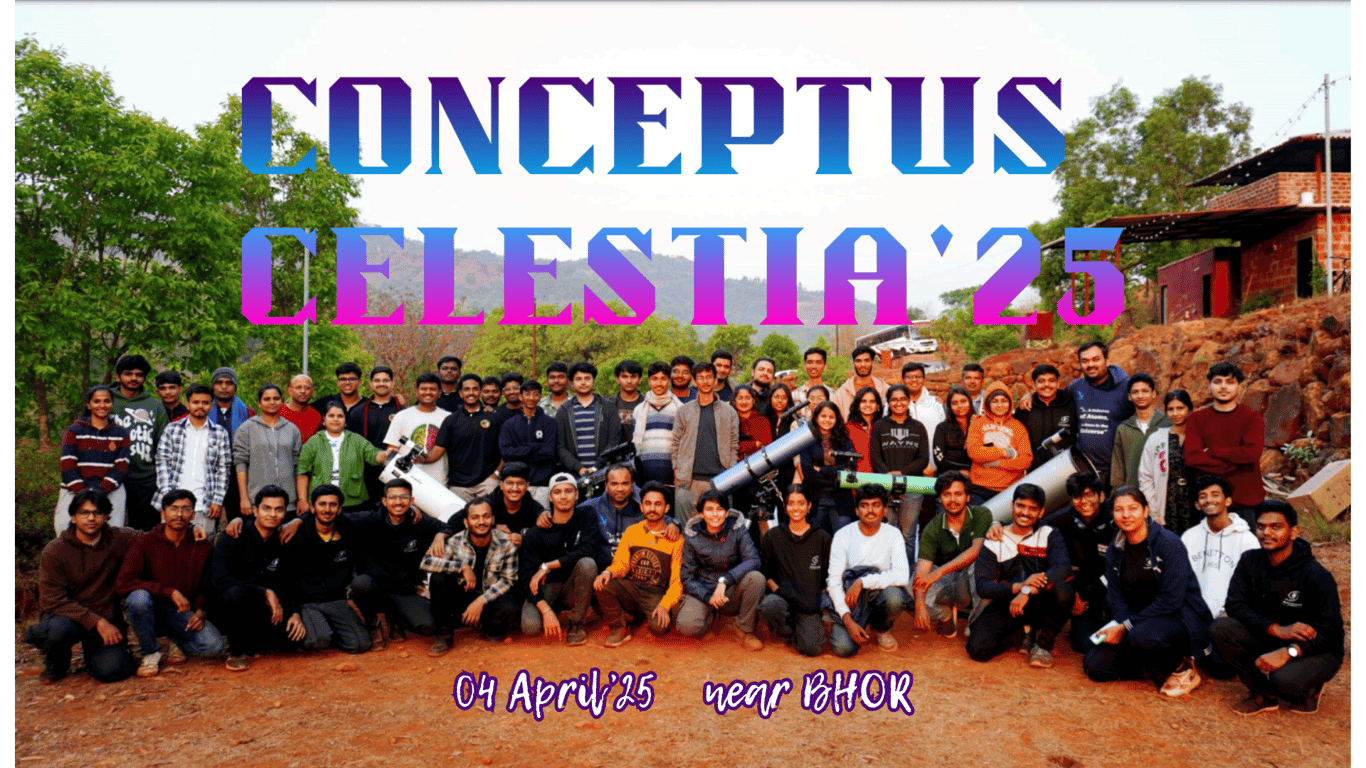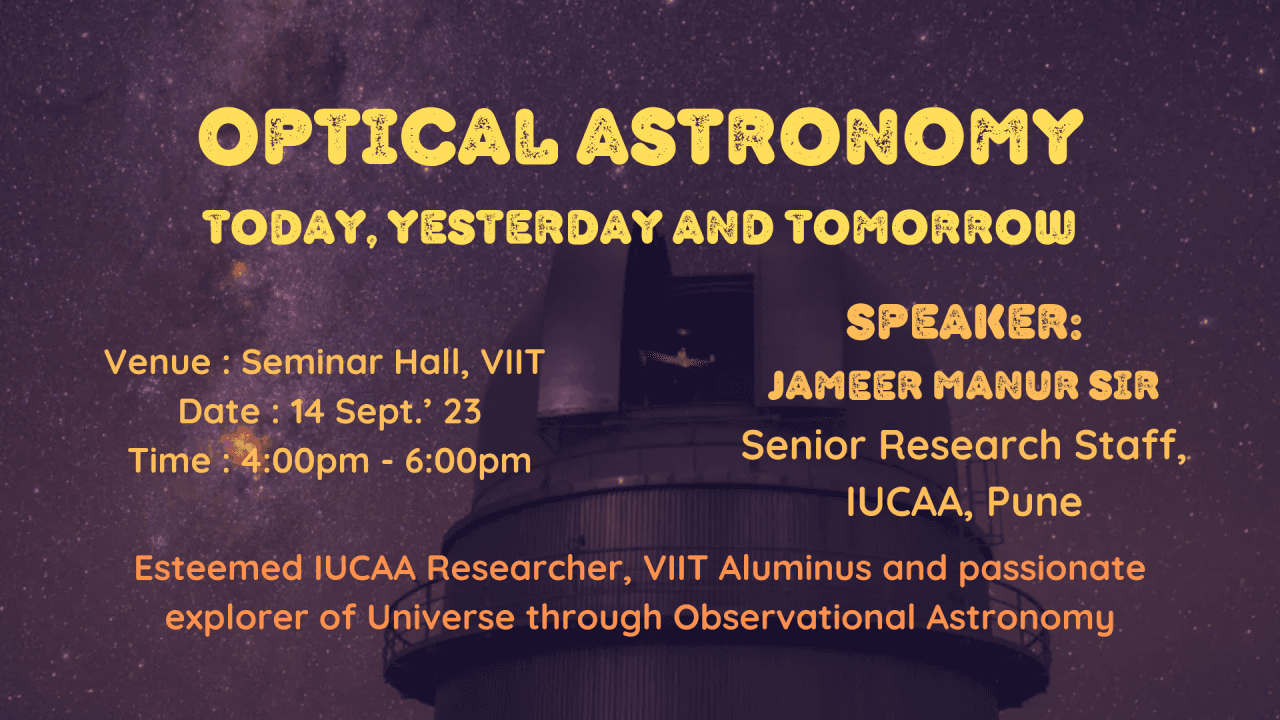Date - 6 April 2024
Venue - Velhe
Organized by - antarikshvit17@gmail.com
The Antariksh Club of Vishwakarma Institutes conducted a public star party on 6th April 2024 near Velhe village Pune. The stargazers endured the night under a dark sky with shimmers of starlight. Observers were blessed to observe the cosmic panorama and study the intuitive star patterns. Newtonian telescopes of different diameters varying from 4 inches, 6 inches, and 8 inches were employed to get closer insights into the heavenly objects. Astro enthusiasts were all set to guide people across handling and managing telescopes to locate and observe celestial objects. Jupiter along with its 4 moons, the Orion NebulaNebulae, the Whirlpool galaxy, the Sombrero galaxy, and many other messier and deep sky objects were observed throughout the night. Hands-on experience in telescopic observations fuelled the excitement of stargazing.
Mentoring sessions conducted by amateur astronomers Mr. Jameer Sir and Mr. Pranav Sir
provided a deeper understanding of constellations and the observable spectrum of astronomy. The roots of constellation mapping and their different interpretations within different regional mythologies were also discussed during these sessions. Along with highlighting the basic differences between astronomy and astrology, the sessions were keenly informative as many myths and misbeliefs were busted. A series of doubts among the curious minds regarding the cosmos were fed with the right information. The club members shared tips and tricks about astrophotography and made the participants take mesmerizing pictures of the constellations
Milkyways’ galactic band. Perhaps, the cloudy weather was a major challenge for stargazing, however, the rise of the golden crescent moon at 6 am left the skywatchers in awe. The experience aimed to make an impact on amateur astronomers and fuel their passion for astronomy.
Event Objectives
To spread knowledge about astronomy and celestial principles, fostering a greater understanding of the universe.
To promote the interest in astronomy by delivering the right information regarding the infinite cosmos.
To let people have hands-on experience with telescopic observations and constellation mapping.
Event Highlights
Stargazing: Skywatch was done with a scientific approach aiming at a detailed observation of the observable universe. Even the basic differences between satellites, fights, messier objects, and star patterns were highlighted based on the light they reflected. A newer observational perspective was delivered to the new stargazers along with the precise sense of recognizing and differentiating different celestial objects.
Educational Sessions: Guiding sessions were held by Mr.Pranav sir and Mr.Jameer Sir both of them being experts in the fields of research and keen skywatchers. The alignment of stars, the sun, the earth, and the moon orbit, seasonal variations, and the origin of different constellation mapping techniques were the fascinating topics of the discussions. A brief explanation answering most of the complexities that usually dwell around the minds while studying the universe was delivered through the workshops.
Every phenomenon that happens in the universe happens because of a logical cause being associated with it. The session's main objective was to predominantly embed a scientific temperament among the participants, creating awareness concerning the contradictory assumptions of astronomy.
Constellation Mapping: The basic methods of sky mapping were explained to the participants. To map a constellation one needs to first locate the brightest star of that particular constellation and then according to the adjacent stars' patterns, one can easily map a constellation. The problem with constellation mapping is that all the stars are not equally bright; most of them are faint so one needs to project one's visualizations according to the emerging star patterns and then a constellation can be observed. Using such ways, the observers mapped many known constellations like the Orion, Auriga, Ursa Major or Saptarshi, Canis Major, and many more. Based on the Orion constellation, the Orion Nebula was spotted and observed through the telescopes.
Astronomical mythologies: Constellation mapping has been practiced since the very beginning of human civilization. Experts thoroughly explored how various mythologies interpret the same constellation differently, influenced by distinct ideologies.
As per ancient Greek, mythology, Orion is a constellation that depicts a hunter fighting a bull with a sword and shield in his hands. However, according to Indian Mythology, it is said to be a wounded deer pierced with an arrow shedding down three drops of blood. Even the basis of the lunar and solar calendars was discussed. The lunar calendar is based on the revolutionary period of the Moon around the Earth which comes to be around 29 days and the Solar calendar depends on the Earth's revolutionary period around the Sun. The logical explanation behind the 27 nakshatras was an interesting topic of the discussion.
Astrological Myths: Often astronomy and astrology are considered to be similar, but there’s a scientific difference of proof and belief between them. Astrology involves the study of stars and planets and their celestial positions to predict future occurrences and their effects on individuals. The discussions stressed that astrology is based on assumptions and insufficient yet illogical proofs. While modern science may dismiss astrology as pseudoscience, its myths continue to hold sway over the human imagination.
The sessions advised participants to not fall for such superstitious misbeliefs by widening their scientific perspective.


